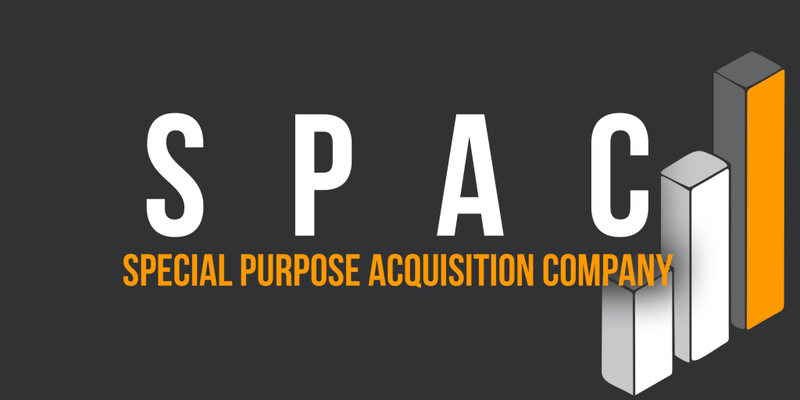What are SPACs? (Special Purpose Acquisition Company)
Dec 08, 2023 By Triston Martin
What is a SPAC? A Special Purpose Acquisition Company (SPAC) is a type of investment vehicle that has become more popular recently. It is a company made only to buy or merge with another company, usually within a specific time. A group of investors from the SPAC by putting their money together to make a public shell company. The shell company then goes public through an initial public offering (IPO), which raises money from investors who believe in the SPAC's management team and their ability to find and buy a profitable target company. Once the SPAC has gotten money from its IPO, it starts looking for a company to buy. The SPAC's management team usually finds and chooses the target company. They use their expertise and knowledge of the industry to find companies that are likely to give investors good returns.
What are SPACs?
A SPAC is a fake company that is only made to raise money through an IPO (IPO). After the IPO, the money raised is used to buy a private company. A group of investors or sponsors with experience in a particular industry or sector usually assembled SPACs. The SPAC's management team is in charge of finding possible companies to buy and negotiating the terms of the deal.
Structure of a SPAC
A SPAC is a company traded on the stock market and set up like a shell company. The SPAC's management team is in charge of looking for a company to buy and negotiating the terms of the deal. Once the target company has been chosen, the SPAC will sign a binding contract to buy it. Usually, the acquisition is set up as a reverse merger, with the company being purchased and merging into the SPAC.
SPAC IPO Process The SPAC IPO process is similar to the traditional IPO process. The SPAC will file a registration statement with the Securities and Exchange Commission (SEC) and offer the SPAC shares to the public. The funds raised from the IPO are held in a trust account until the SPAC identifies a target company to acquire. SPAC Life Cycle The lifecycle of a SPAC typically consists of three phases: (1) IPO, (2) target identification, and (3) merger or acquisition.
IPO Phase
During the IPO phase, the SPAC will file a registration statement with the SEC and offer shares of the SPAC to the public. The funds raised from the IPO are placed in a trust account and are used to acquire a target company.
Target Identification Phase

During the target identification phase, the management team of the SPAC will identify potential target companies to acquire. The team will evaluate likely target companies based on factors such as financial performance, growth potential, and industry trends.
Merger or Acquisition Phase
Once a target company is identified, the SPAC will enter into a definitive agreement to acquire the company. The acquisition is typically a reverse merger, with the target company merging into the SPAC. After the merger or acquisition, the target company becomes publicly traded.
Benefits of a SPAC
There are several benefits to using a SPAC to go public, including:
- Faster time to market: Going public through a SPAC can be faster than a traditional IPO. SPACs can typically complete the acquisition process within six to nine months, while conventional IPOs can take over a year.
- Lower costs: SPACs can be a more cost-effective way to go public than a traditional IPO. SPACs require a different level of marketing and underwriting than conventional IPOs, which can result in lower costs.
- Greater flexibility: SPACs offer greater flexibility than traditional IPOs. SPACs can negotiate the terms of the acquisition with the target company, which can result in a more favorable deal for SPAC and its investors.
Risks of a SPAC

There are also several risks associated with investing in a SPAC, including:
- Lack of operational history: SPACs are typically formed to acquire a target company and need an active account. This can make evaluating the management team and the potential target company's potential challenging: When a SPAC completes an acquisition, the value of the SPAC shares may decrease due to the issuance of new shares. This can result in a dilution of the importance of existing shares.
- Failure to identify a target company: If a SPAC cannot place a target company within a specified timeframe, the SPAC may be forced to liquidate and return the funds to its investors.
- Lack of control: When a SPAC acquires a target company, the management team of the target company typically takes control of the combined company. This can result in a loss of power for the SPAC's investors.
Conclusion
SPACs are a popular investment vehicle that has become a common way for private companies to go public. SPACs offer several benefits, including faster time to market, lower costs, and greater flexibility. However, investing in a SPAC can also be risky, and investors should carefully evaluate the management team and potential target companies before investing. As with any investment, investors must conduct thorough due diligence and consult a financial advisor before investing in a SPAC.

Navigating the World of Alternative Investments: A Comprehensive Guide

When Can You Lose Your 401(k) Rights

What is Risk Reversal? A Beginner's Guide to Options and Hedging

What are SPACs? (Special Purpose Acquisition Company)

The 10 U.S. cities with the most population in 2022

A Comprehensive Overview of Setting Up a Special Needs Trust

See: How Do Dividends Affect the Balance Sheet?

10 Strategies for Avoiding Taxes When Receiving a Lump Sum Pension Payment

2024 Forex Trading Made Easy: Our Top Automated Software Picks

